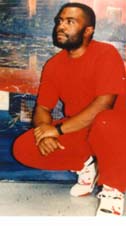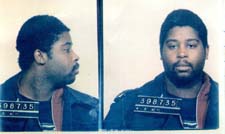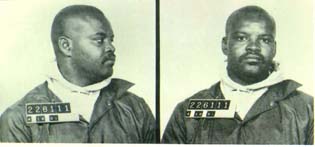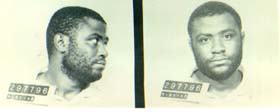Home
JD Features:

Mistaken identification leads to mistaken conviction in D.C. purse snatchings
His name is James H. Neal... See if you agree that he is totally innocent of the crimes for which he was convicted.
Submitted by James H. Neal
Edited by Barbara Jean McAtlin
While looking through the exonerating evidence that James (Jimmy) Neal sent in with his story submission -- evidence that shows Jimmy to be in another city at the time of these crimes -- I believe that there is substantial proof that Jimmy may just be innocent of the crimes for which he is imprisoned. Jimmy is presently serving a sentence of 49 to 147 years for these crimes. This sentence most certainly means a life sentence for him. Jimmy feels that had the death penalty been applicable in his case, he would be dead by now -- another innocent man murdered by "justice." Jimmy says that his cries of innocence fall on deaf ears -- the deaf ears of the Washington, D.C. Judicial System -- America's Hometown. Without doubt, Jimmy's situation is entirely real -- it could happen to you.
In 1986, James H. Neal, a 27-year old black man, was living in Washington, D.C. He was working at Reagan National Airport and living with his girlfriend in a row house on Rhode Island Avenue, NW. Life was good for Jimmy. He was looking forward to spending Christmas with his family and friends and just taking life in the historic city one day at a time. Jimmy's life was about to take a terrible turn.
In 1987, Jimmy was arrested by the D.C. Metropolitan Police at his home. After his arrest, Jimmy was wrongfully convicted in the D.C. Courts of a string of thirteen robberies -- all purse snatchings -- as well as unauthorized use of a vehicle. His conviction was based on the testimony of three eyewitnesses who had picked another man out of a photographic array before picking Jimmy. Jimmy was picked out of a police lineup after he was forced to stand on a two-inch to four-inch high box that elevated, distorted and altered his true height and made him look as tall as the man the three witnesses had picked out in the earlier photographic array. Neither of the other suspects ever stood in a lineup. The police returned the property of the victims to them at the time of Jimmy's lineup. That the police would return the victims' property at the lineup would seem to be quite effective in giving the victims an idea that the "right" man was included in this particular lineup. There was no other evidence that pointed to Jimmy as being the perpetrator -- no fingerprints, nothing. Except for their differing heights, there are many similarities in the looks of all of the suspects -- all are black, stocky, round-faced and bearded. During a high stress situation, it is relatively easy to see how the victims could have been confused and identified the wrong man (please see mug shots).
Ricardo Ebron
Lawrence Jones
Jimmy NealEven though the District Attorney recommended against trying Jimmy for these crimes, an Assistant District Attorney took over the case and decided to prosecute Jimmy anyway.
The crimes that had begun to terrorize the metro D.C. area in November of 1986, ended abruptly for about two weeks before they began anew that same December.
On December 27, 1994, a man named Ricardo Carlton Ebron was arrested for car-jacking. Ebron relieved a woman of her automobile and used the vehicle to commit fifteen robberies -- all purse snatchings. This story was reported on WUSA Channel 9 News on December 27, 28 and 29, 1994. After viewing Ebron's photograph, one can only come to the conclusion that in those brief, hurried encounters and -- with their descriptions being virtually identical -- an identification error occurred. The white car theft victim never identified Jimmy Neal.
Further investigation into the Ebron case revealed that Ricardo Ebron had been arrested for the theft of two money orders that had been stolen in a purse snatching on November 28, 1986 -- the same time the thefts stopped for a short time. Jimmy was convicted of two purse snatchings that happened on that very same day. The information about the similarities of the crimes or which Jimmy was convicted of, and the crimes of Ebron, was not discovered until December 1994, even though the same police detective who arrested Jimmy is mentioned by name in Ebron's 1988 police reports. This has never been seen by a jury.
During the course of the November 28 robberies, police located the car Ricardo Ebron had stolen at 8th and Jefferson Street, N.E. in the District, mere blocks from his residence. Using an immobile potato chip truck, D.C. Metro Police set up surveillance on the vehicle with the hope that they would catch the perpetrator should he return to the vehicle. The man did indeed return to the vehicle. He escaped. The stolen car was found abandoned a short time later in Maryland. Because of a prior arrest for burglary in which the charges were dismissed, Jimmy became a suspect in these purse snatchings and the carjacking in February 1987, even though the crimes bore no similarities.
Ricardo Ebron recently pleaded guilty to crimes he committed in nearby Maryland and was sentenced to 15 years in prison. He denies committing the crimes to which he pleaded guilty. He also claims he's not guilty of the crimes for which Jimmy was convicted, even though the modus operandi is rare and identical, purse snatchings committed from a vehicle. These types of snatch robberies are rare and are committed when the robber asks a victim for directions or uses some other type of ruse before snatching the victim's purse. In one police report, Ebron admits he was addicted to crack and that he used this type of robbery to support his [crack] habit. Also included in this police report, Ebron said [that] he only robbed elderly females because he felt they would not be able to identify him. A jury has never seen this evidence.
Even though Ebron has been credited with dozens of prior robbery counts, many of which were purse snatchings,because the six-year statute of limitations has run out on these crimes, Ebron, by law, is now barred from prosecution for them.
Before Jimmy was thrust into the picture, another suspect, Lawrence Jones, was identified as the perpetrator by the three witnesses who later identified Jimmy as the perpetrator of these same crimes. Initially, two different detectives from different police districts were investigating the same case with no knowledge of the other investigation. A warrant was obtained for Jimmy's arrest based on the eyewitness identification before a warrant was obtained for the arrest of Lawrence Jones. The detective who had pinned Jones as a suspect retreated and allowed his colleague to go ahead with the case against Jimmy. Jones was a suspect in an unrelated purse snatching and had tried to negotiate a victim's check. The jury never heard this evidence.
On November 19, 1986 at 1:50 p.m., the vehicle that would be used in the Washington, D.C. crimes was being stolen from a parking lot on New Hampshire Avenue in Silver Spring, Maryland. A records officer from the bank Jimmy used testified at trial that Jimmy had used an ATM machine to withdraw some money from his account on Maryland Avenue, N.E. in Washington, D.C. at 2:06 p.m. He keyed in his PIN number wrongly and had to reenter it to get his money. He reentered his PIN at 2:13 p.m. It is impossible to drive from the parking lot on New Hampshire Avenue in Silver Spring, Maryland to the ATM machine on Maryland Avenue, N.E. in Washington, D.C. in twenty-three minutes. Unfortunately, no camera existed at this ATM machine, as it was located at a mall, not at a bank building.
Only two ATM cards existed for this bank account. One ATM card belonged to Jimmy and the other to his grandmother. His grandmother, who was listed on his account, testified that she had never used Jimmy's ATM card and it was proven that she had not used her card on the day in question. The bank clerk testified that there were three cards issued to the account. The clerk neglected to say that the third card had been taken by an ATM machine when Jimmy keyed in his PIN number wrongly too many times during one transaction. That card was later replaced by the card Jimmy was using. Only Jimmy and his grandmother had access to this account. The bank records alone should show that there is no possible way Jimmy could have committed these crimes in the time frame the prosecution says he did.
The bank officer also testified that Jimmy withdrew more money from his account from a bank on Washington Street in Alexandria, Virginia, at 11:40 a.m. on November 21, 1986, fifty minutes before a robbery took place on Legation Street, N.W. in Washington, D.C. It is impossible to travel from Washington Street in Alexandria, Virginia to Legation Street, N.W. in Washington, D.C. in fifty minutes.
After the ATM withdrawal in Alexandria, Jimmy and a friend went to a jewelry store -- also located on Washington Street in Alexandria -- to put a ring on layaway. The dated layaway slip was never seen by the jury nor did they hear from Jimmy's friend or the jewelry store clerk who waited on them.
On February 17, 1989, Jimmy passed a polygraph test attesting to his innocence of these crimes.
These rare robberies continued to occur even after Jimmy's incarceration as well as before and after Ebron's incarceration and parole.
Jimmy has now spent almost 14 years of his life in the Lorton Penitentiary in Lorton, Virginia because eyewitness testimony, one of the most widely used but unreliable forms of proof, can be the most persuading to a jury. Jimmy Neal seeks justice.
James H. Neal #184-107
D.C. Jail
1901 D Street, SE
Washington, DC 20003
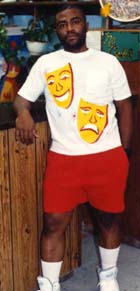
© Justice Denied
